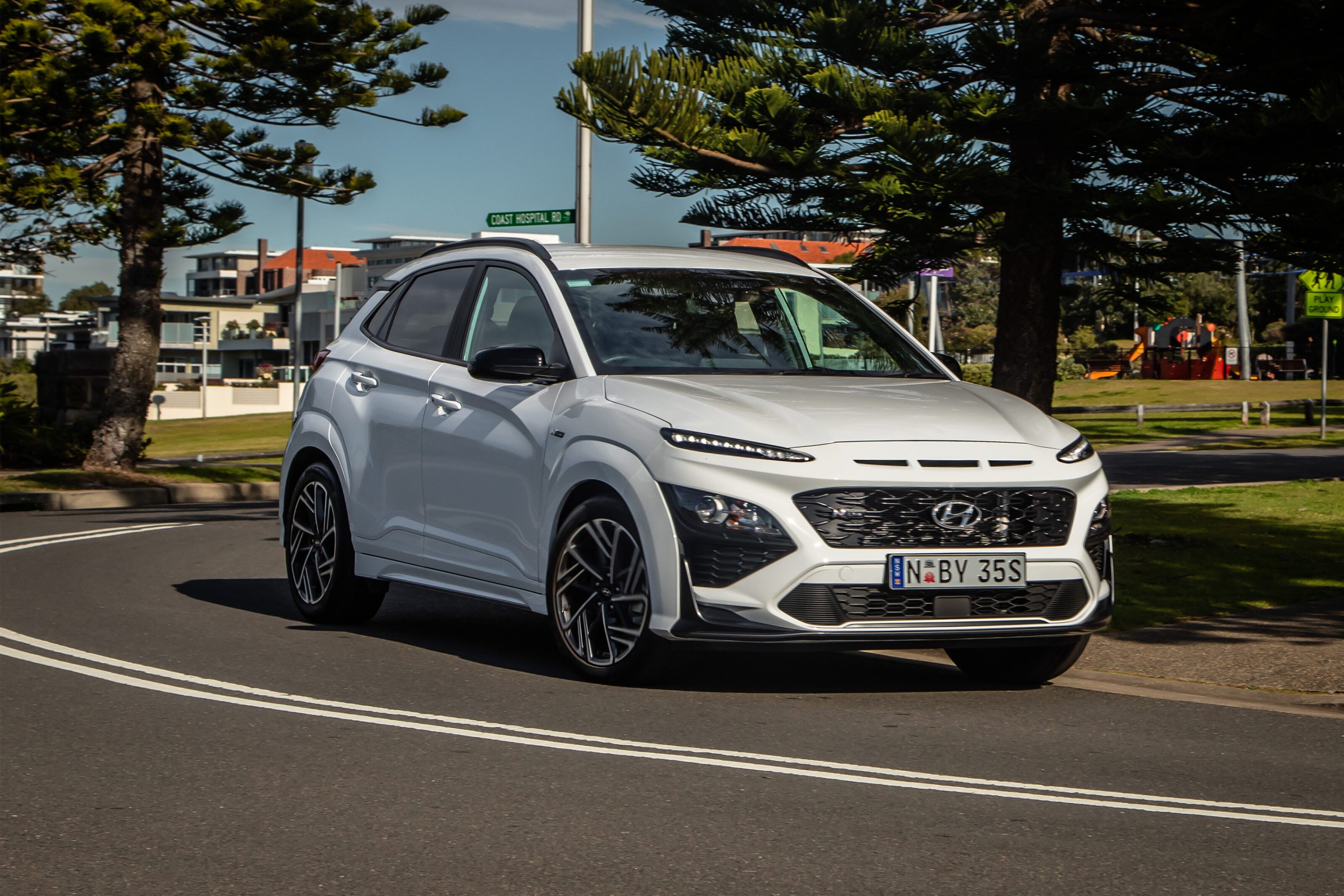Score breakdown
Things we like
- Engine’s mid-range performance
- Well-judged ride/handling balance
- Comfortable seats front and rear
Not so much
- Poor value compared with i30 N-Lines
- Less boot and cabin space than i30
- Gearbox calibration
- Intrusive lane-keep system
- 10,000km service intervals
For buyers without the budget for the forthcoming Kona N performance compact crossover, Hyundai offers a more affordable yet still sporty alternative in the line-up.
The Hyundai Kona N-Line was introduced this year as part of a mid-life refresh for a model that has been highly popular since launching in late 2017.
Priced from $36,300 before on-road costs, the N-Line is a mid-level variant sitting almost equidistant between the $26,600 base Kona and the $47,500 flagship N.
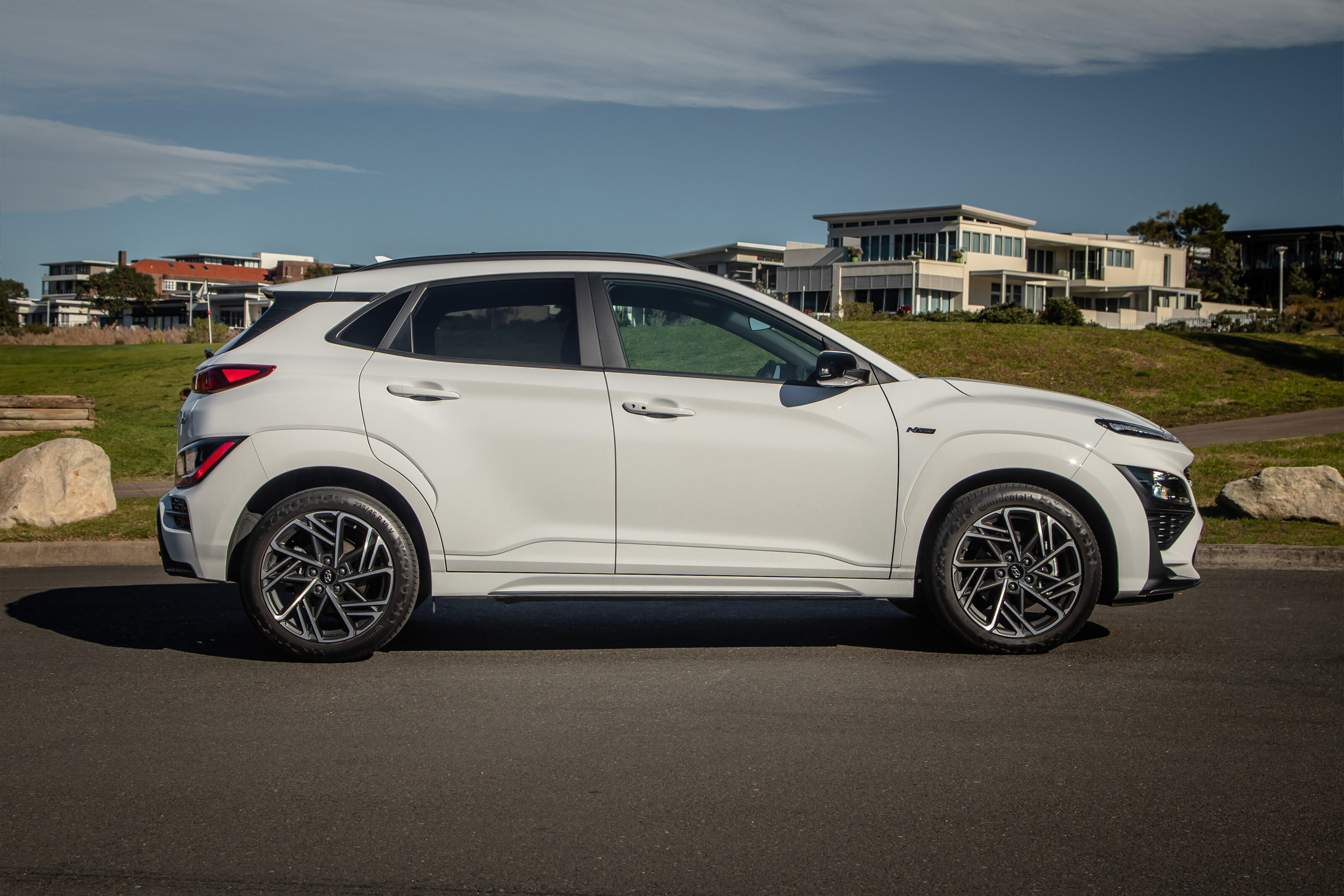
While the Kona N-Line misses out on the N’s 206kW 2.0-litre four-cylinder turbo engine, among other things, it has more power than all other variants – albeit thanks to some product-planning orchestration.
Hyundai Australia has essentially robbed the 1.6-litre four-cylinder turbo previously available as an option on Elite and Highlander models and made it exclusive to N-Line variants (which also include the more heavily featured, $42,400 N-Line Premium).
As with the i30 small car on which the Kona is based, N Line labelling brings a sports body kit comprising unique bumpers, side skirts and dual tailpipes. The Kona N-Line also wears 18-inch alloy wheels with a distinctive, intricately detailed rim design.
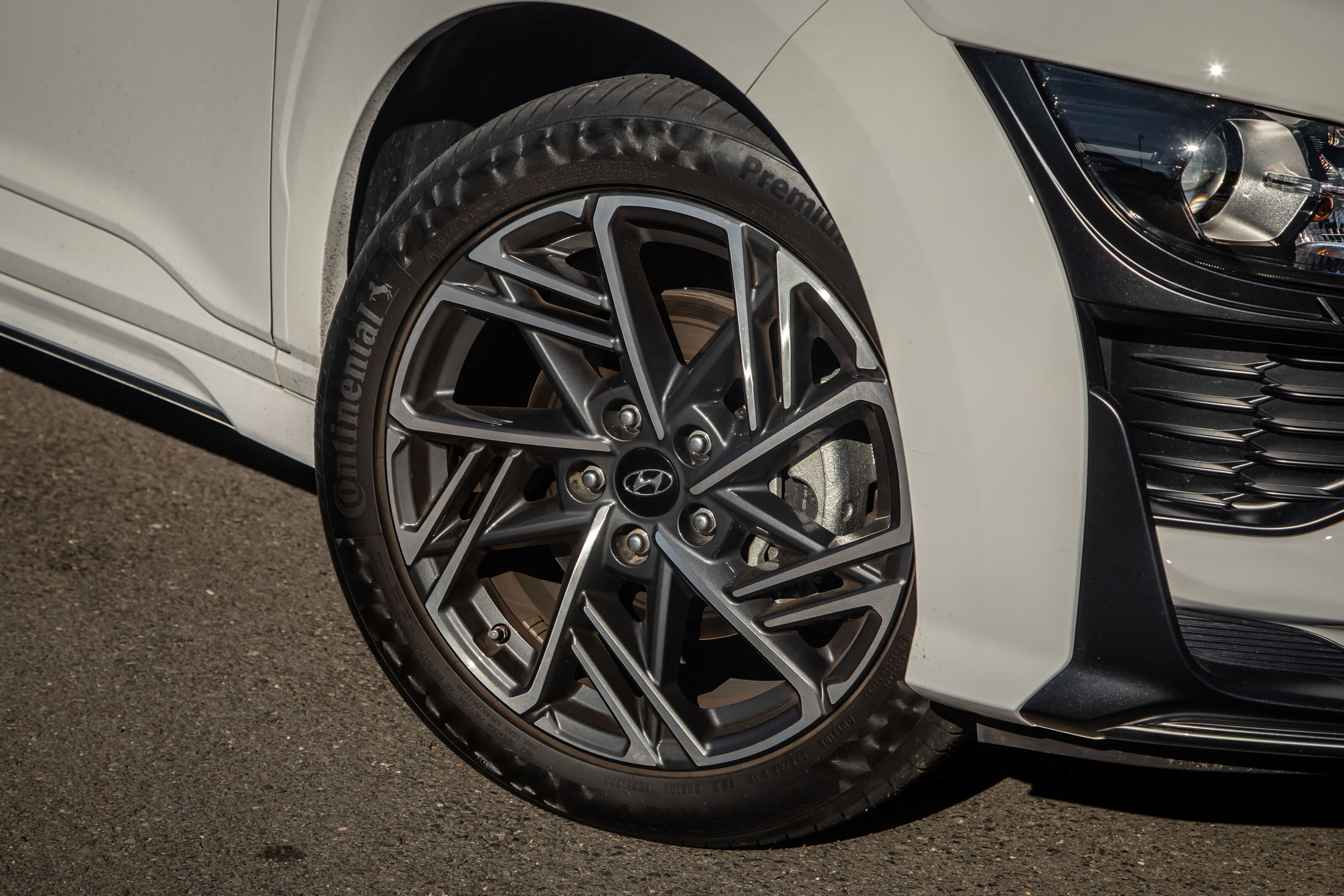
The overall look, in our view, achieves a good visual balance between the plainer (though not unattractive) regular Kona models and the more aggressively styled N. The sportier styling of N-Line variants is helped immensely by ditching black lower-body plastic cladding.
Our test car is finished in white paint that, along with red and turquoise exterior colours, is a no-cost option. It’s an extra $595 for black, dark grey or blue premium paints. N-Line models are also available with a black contrast roof for no additional cost.
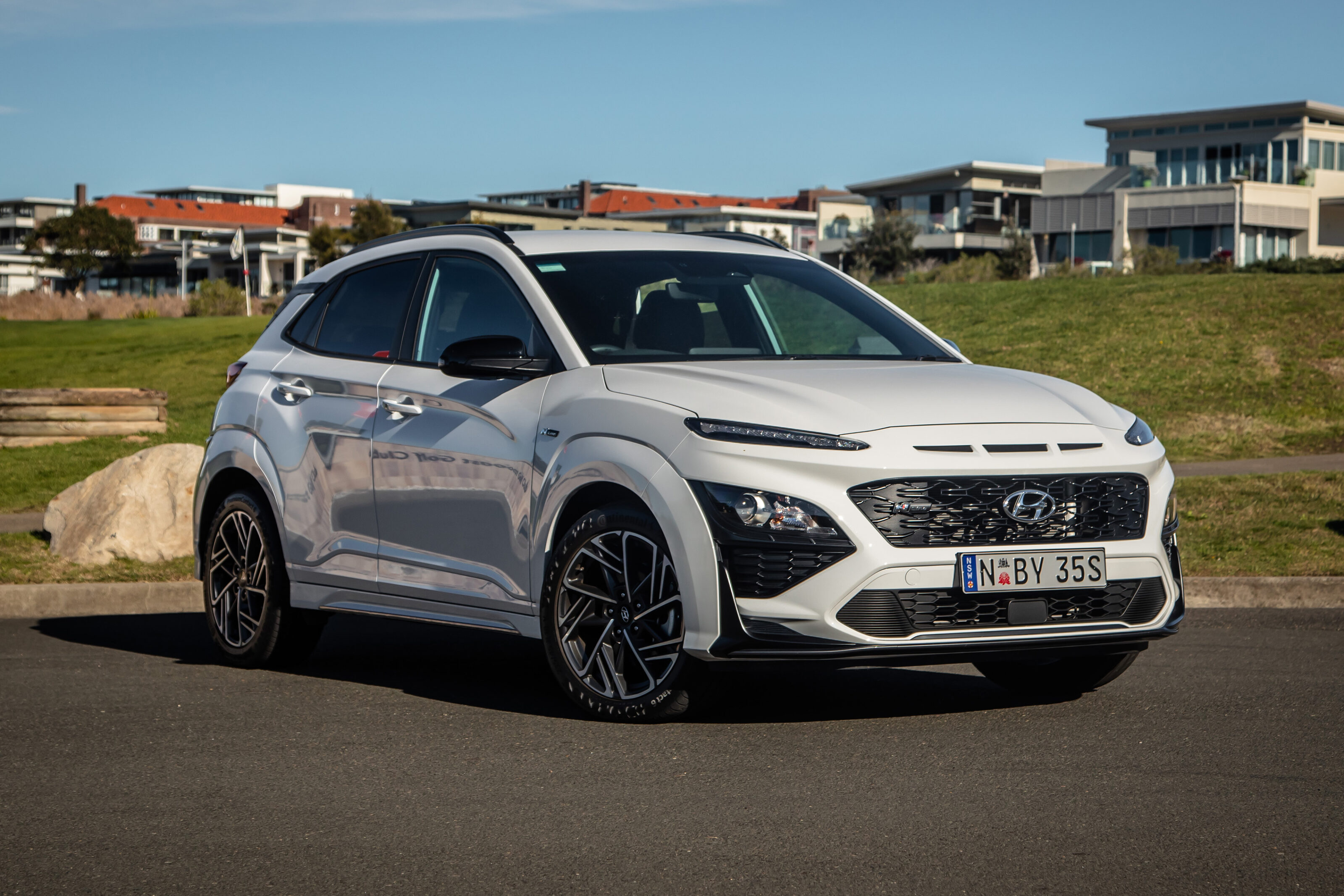
The Kona N-Line’s blind spot and rear cross-traffic monitoring, as well as Safe Exit door-opening warning and parking guidance for the rear-view camera are absent from the i30 N-Line, while the SUV has a fully digital driver display, larger (10.25-inch) central touchscreen and a Harman Kardon audio, compared with the all but identically priced i30 N-Line Premium ($36,200) that has the same infotainment display and an Infinity sound system.
Inside, the Kona misses out on the red seatbelts of the sporty i30s but otherwise has a similarly liberal amount of red garnishing. There’s red stitching for the sports seats and steering wheel, plus anodised red for the gear lever and vent directors.
They’re all welcome highlights in what is otherwise an all-black interior.

N logos also feature on the gear lever, steering wheel and backrests.
There’s less use of softer materials in the Kona compared to its hatch cousin, most detectable around the doors. The quality of the SUV’s headlining is also disappointing.
No such question marks against actual build quality, with plenty of solidity to the cabin’s construction and consistency to the various joins.
No question marks against the Kona’s build quality, with plenty of solidity to the cabin’s construction and consistency to the various joins
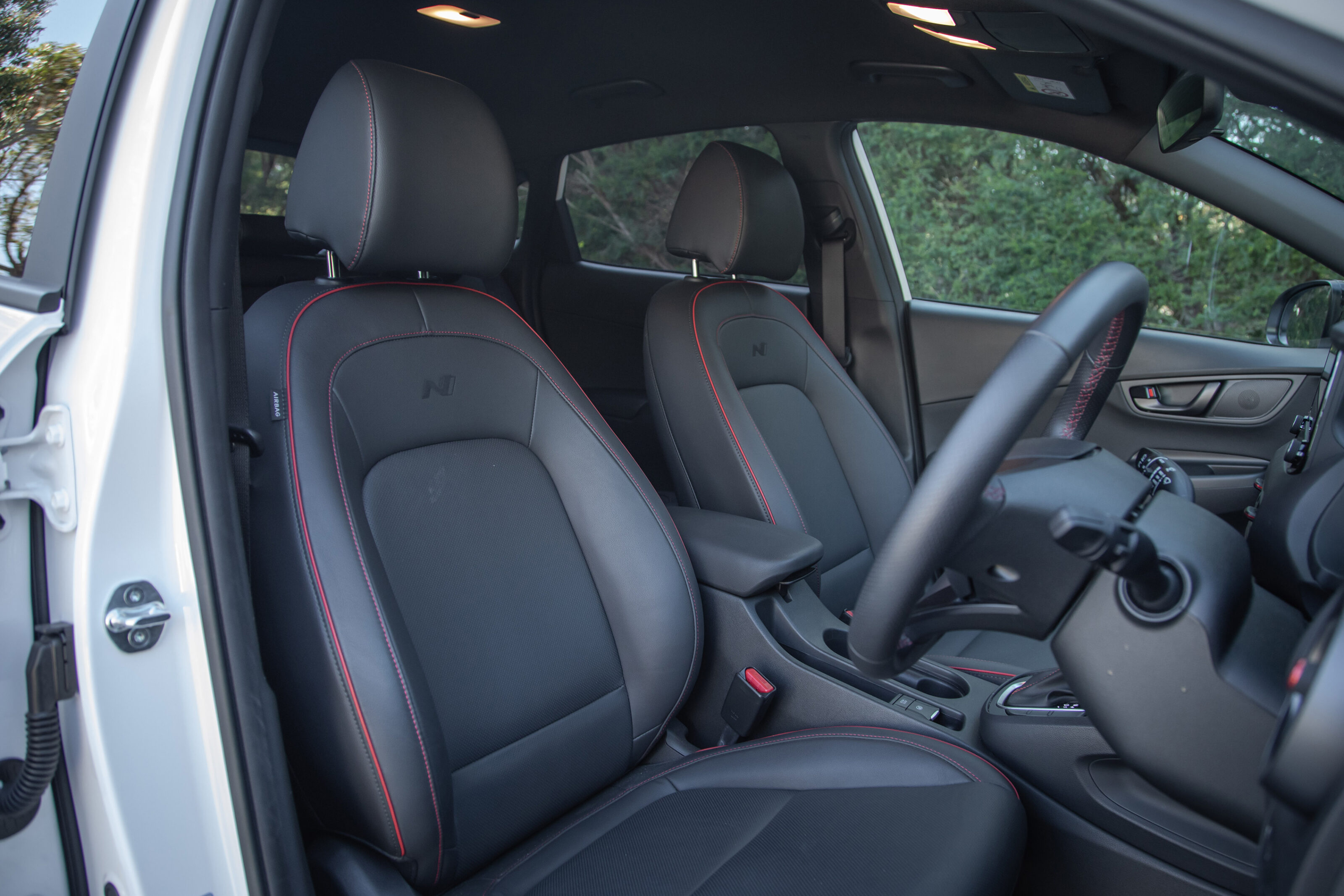
Ergonomics are generally excellent, too, extending to the infotainment interface that is simple to use and neatly presented via the wide touchscreen display.
The screen size allows for a helpful split-screen option for the integrated navigation, though the N-Line Premium goes one step better with its fully digital instrument display that can offer map guidance more directly ahead of the driver.
Owners can plug in for Apple- or Android-style interfaces – and apps such as Waze and Spotify – via CarPlay and Android Auto, respectively.
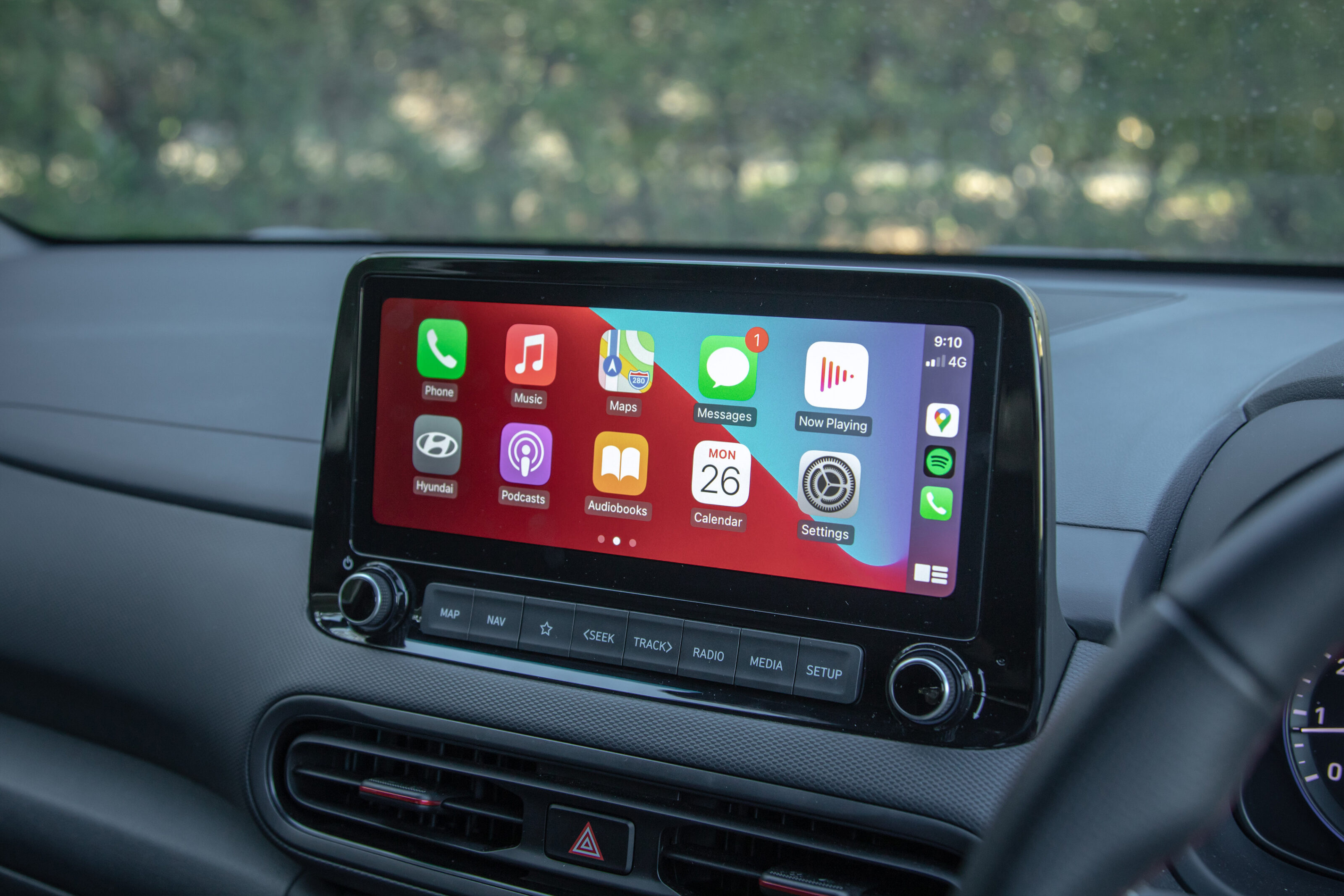
The leather-appointed seats have the requisite sporty look with their red piping/stitching and prominent bolsters, and most importantly they’re easy to relax into while offering good support.
Electrically adjustable front seats with ventilation and heating functions, plus a heated steering wheel and head-up display, are reserved for the N-Line Premium despite powered driver’s seat adjustment and heated/cooled front seats being standard on the i30 N-Line.
Passengers will also appreciate the comfort of the rear bench (also heated in the outboard positions in the N-Line Premium). There’s surprisingly limited legroom for adults, however, not helped by a wheelbase that’s 50mm shorter than the i30’s.
Headroom is down 16mm on the i30 despite the Kona’s SUV status, though will be sufficient for most adults. Foot space is also plentiful.
Unlike the i30, the Kona lacks proper rear vents at the back of the centre console, instead relying on floor ventilation.
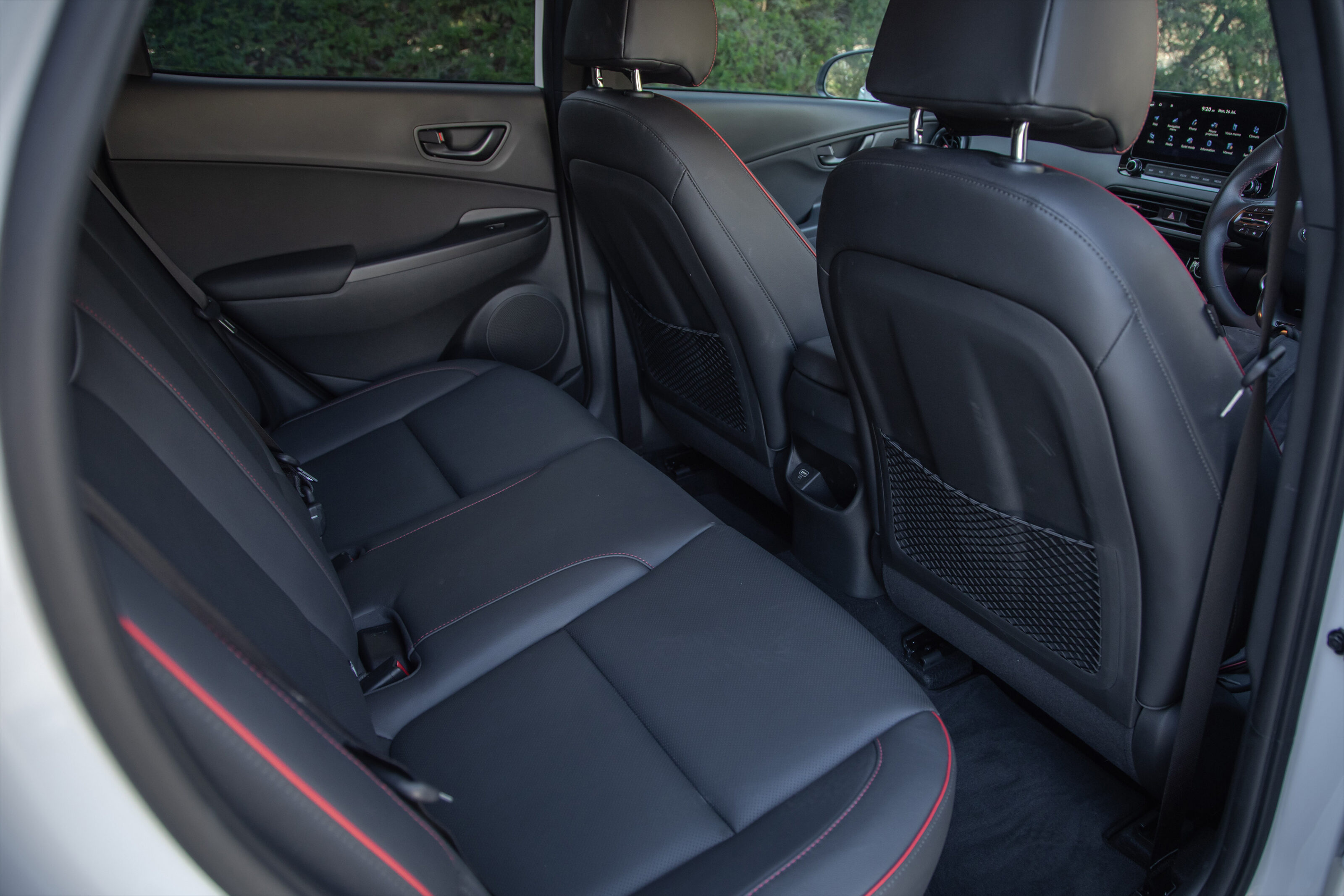
The Kona’s boot is also less practical than the i30’s. Its 374-litre capacity, just 21 litres short of the hatchback’s volume, doesn’t sound bad on paper yet the shallowness and shortness of the crossover’s boot makes it trickier to fit a pram or suitcases compared with the i30.
While the 60:40 rear seats fold completely flat for expanded cargo space, plenty of rival compact SUVs offer bigger boots and greater versatility: Kia’s twin Seltos is bigger at 433 litres, Ford’s Puma ST-Line V has a multi-level floor with a useful under-floor storage tub, and VW’s T-Cross has a sliding rear bench that allows owners to adjust the balance of rear legroom and boot space (up to 455 litres).
An automatic tailgate isn’t available, even with the Premium.
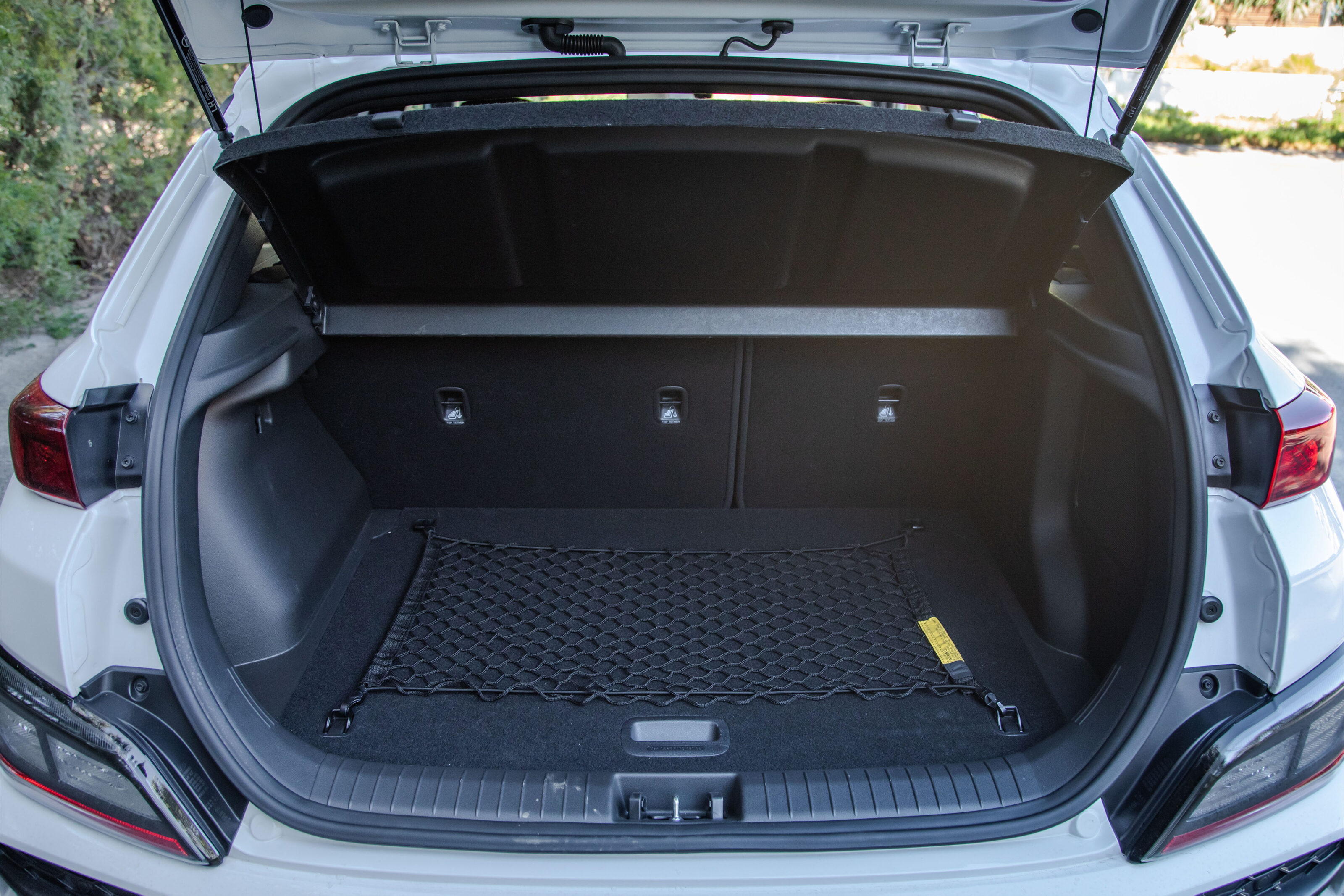
An N-Line badge sits on the flanks of the Kona but not the tailgate, which instead adopts a ‘1.6T’ insignia to denote the turbocharged 1.6-litre four-cylinder engine under the bonnet.
As in the pre-facelift Elite and Highlander models, the engine produces 146kW and 265Nm to offer more than the 110kW/180Nm of the 2.0-litre four-cylinder found in other regular Kona variants (including the MY21 Elite and Highlander).
The turbo engine also sticks with a seven-speed dual-clutch auto, whereas the unassisted 2.0-litre now comes with an automatic CVT (continuously variable transmission).
A dual-clutch is thankfully a more natural pick for a model with increased sporting intent, with its inherently faster-shifting nature and real (rather than simulated) gear ratios.
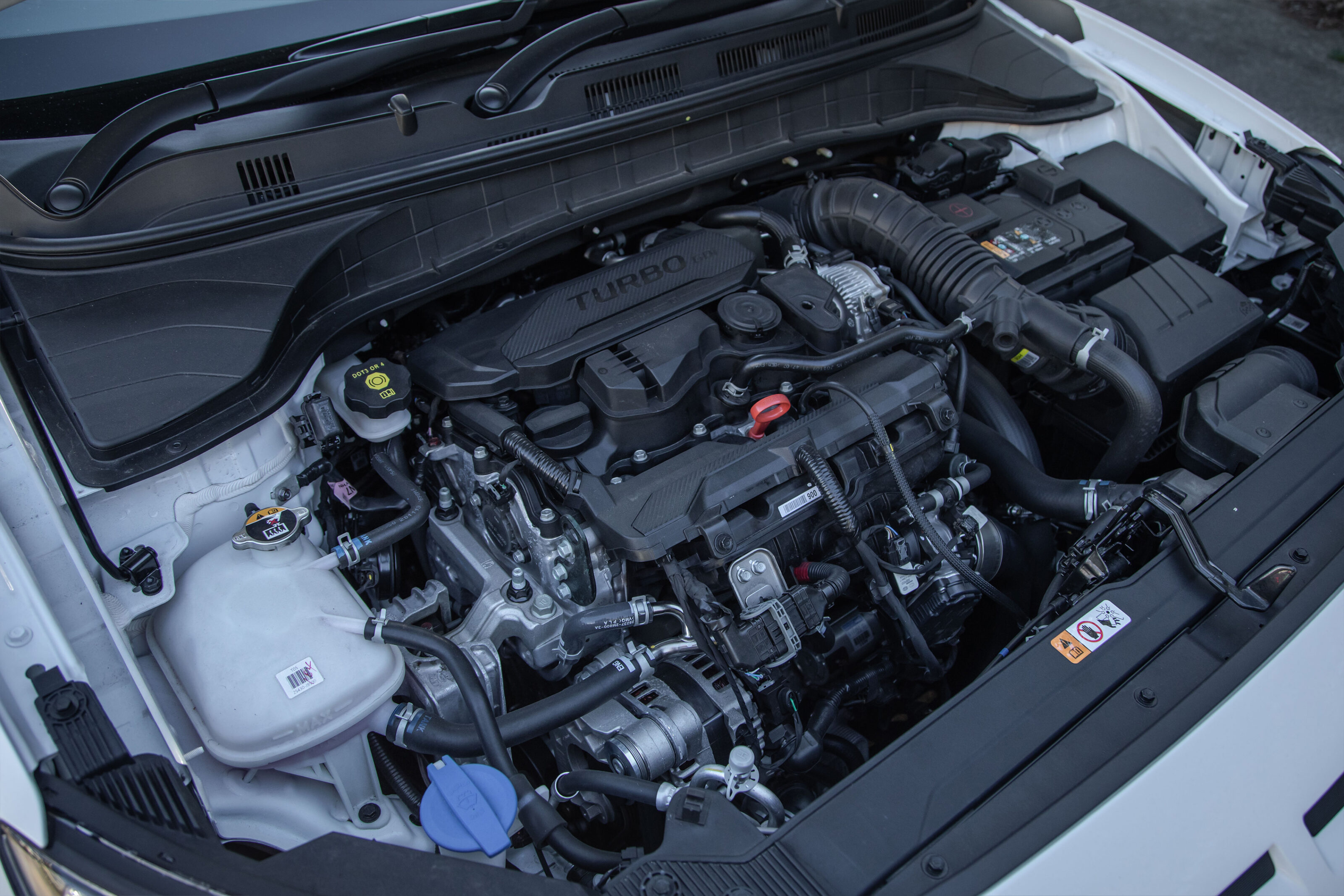
Unlike some similar-tech gearboxes, it also gets the Kona underway from standstill quickly and cleanly.
It’s just a shame the N-Line’s auto has been calibrated with fuel economy in mind, as the crossover’s above-average performance is not always obvious.
With the auto’s habit of keeping revs below 1500rpm – just below the start of peak torque – the engine can feel lazy, prompting a firmer press of the accelerator pedal.
Response improves greatly with a rotation of a centre console drive-mode dial, from the default Comfort to Sport.
A dual-clutch is thankfully a more natural pick for a model with increased sporting intent, with its inherently faster-shifting nature and real (rather than simulated) gear ratios

Here, revs are increased to give the driver more immediate access to the Kona N-Line’s strong mid-range performance that’s enjoyable, if lacking the punchiness of the 140kW/320Nm 2.0-litre turbo found in Volkswagen’s $40,990 T-Roc 140TSI Sport.
The Kona also misses out on paddleshift levers offered by the VW as well as the i30 N-Line.
Using a mix of driving modes and a variety of roads, we registered an indicated average fuel consumption figure of 7.6 litres per 100km – which compares favourably with the Kona N-Line’s official, lab-derived 6.9L/100km. The engine can also run on regular unleaded petrol.
That makes the Kona N-Line slightly more efficient than the i30 despite being heavier and providing on-demand all-wheel drive over the front-drive hatch.
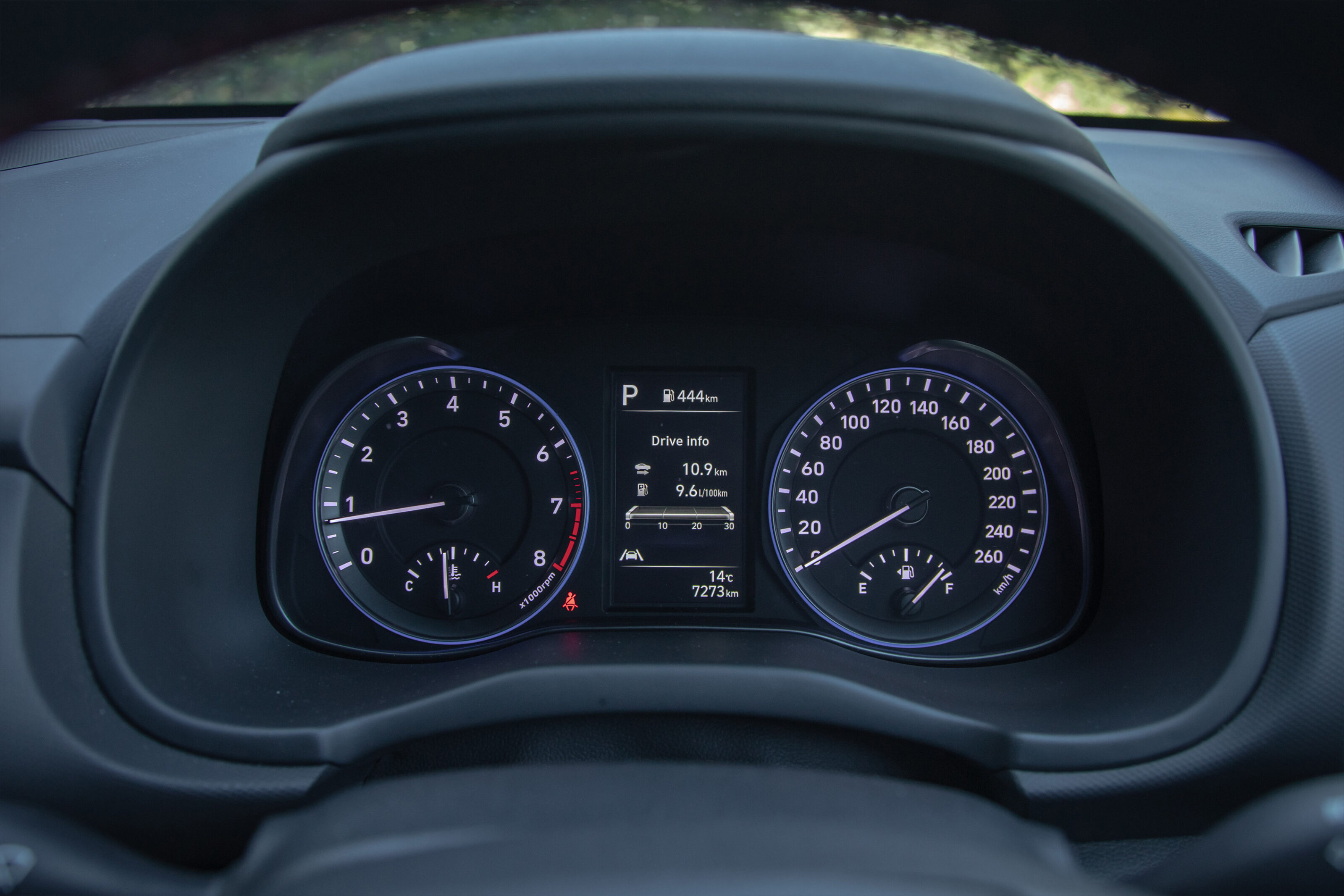
The Kona’s 178mm ride height is also 38mm higher than the i30, though is best suited for easy off-road trails rather than anything too taxing despite the inclusion of a 50-50 AWD Lock.
Sticking to regular roads, the Kona N-Line’s suspension strives for a balance of soothing and sporty – and largely succeeds.
The front suspension can jar ever so slightly when encountering particularly poor road surfacing, but on most roads the Hyundai is unlikely to prompt any non-petrolhead partner to question why you didn’t buy a less-sporty version.
Its pay-off is handling that, while not a match for the class-leading Puma, is highly assured on country roads and aided by predictable steering response.
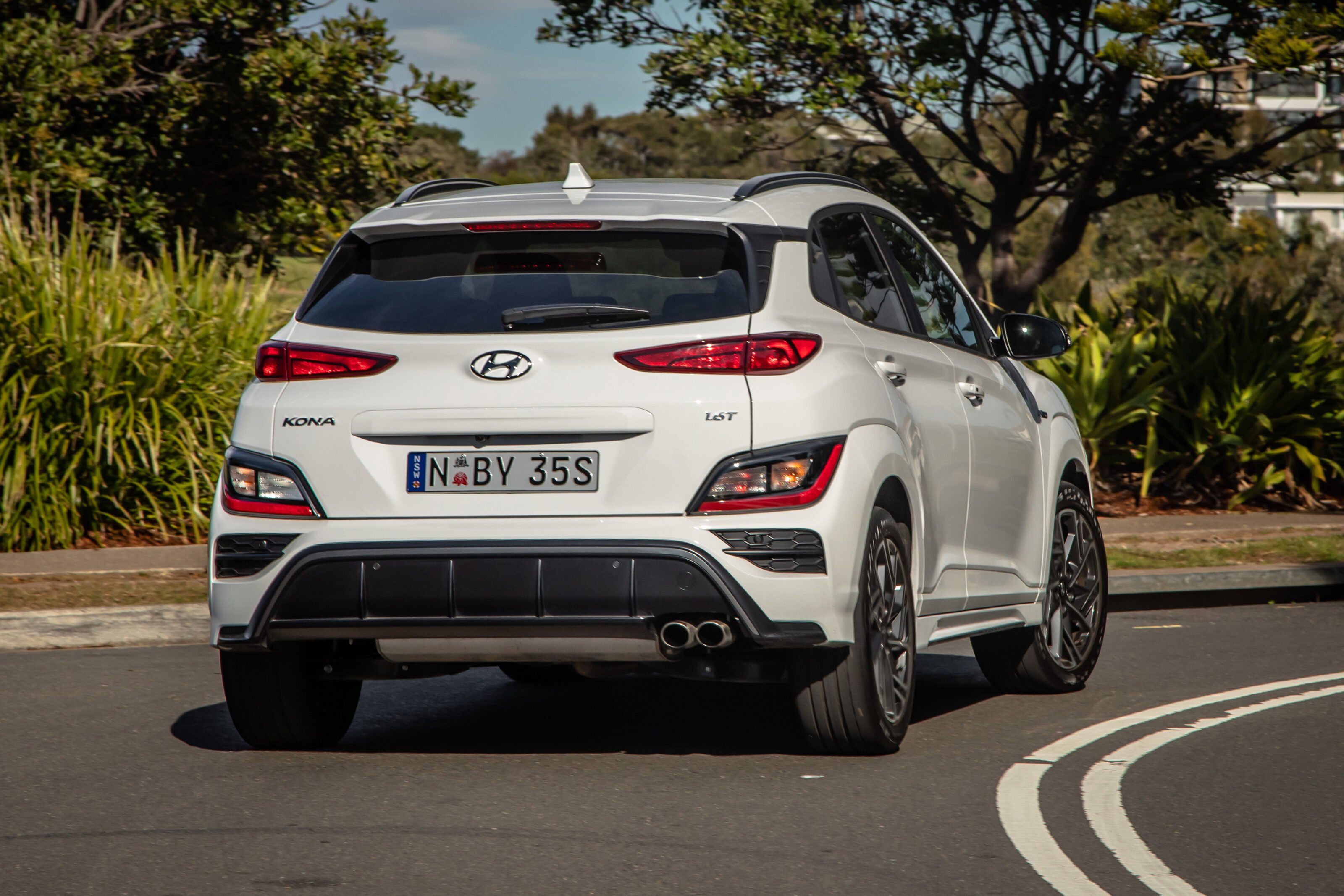
The Kona N-Line’s steering has a lightness that serves drivers well around town, too – making the Hyundai easy to manoeuvre in concert with its compact dimensions and good turning circle.
To be consistently smooth, though, drivers need to switch off Lane Keep Assist (via a button on the steering wheel). This driver aid can otherwise interfere with the steering above 60km/h, as it attempts – over-enthusiastically – to keep the Kona between lane markings, making small, niggling movements of the steering wheel even when the vehicle seems sufficiently centred.
It’s a common issue across many Hyundai (and Kia) products, and a recalibration for the future would be welcome.
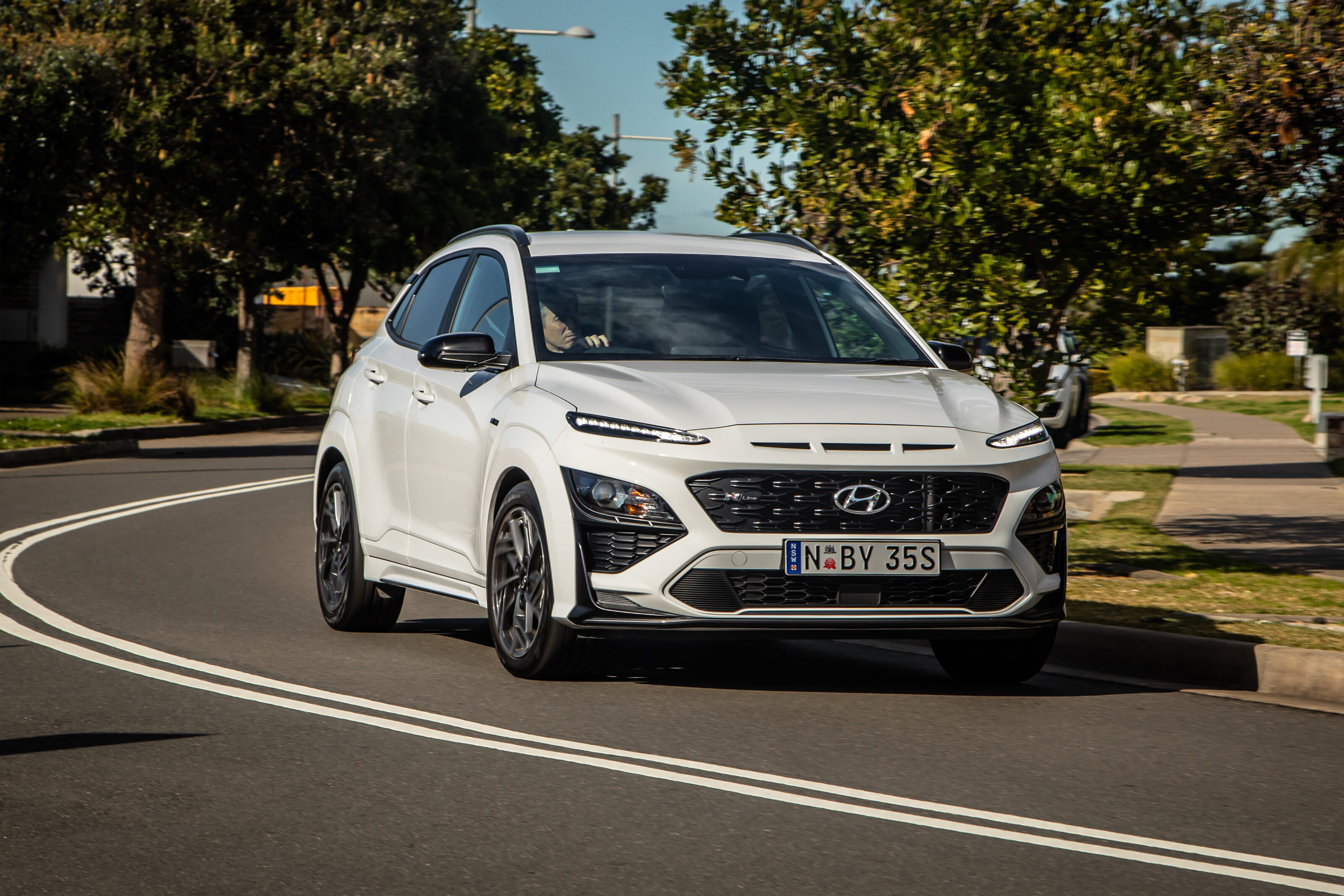
The bigger issue for the Kona is that its value looks weak compared with the bigger i30 that is cheaper, more practical, and better equipped.
This may well explain why the hatchback still comfortably outsells the crossover despite the market dominance of SUVs.
And elsewhere in the segment for similar money, there are stronger options: the Ford Puma ST-Line V is properly fun to drive and has a better boot; the mechanically matched Kia Seltos Sport+ is roomier, and the Skoda Kamiq Monte Carlo is seriously spacious for this class and a bit more upmarket in its presentation.
The bigger issue for the Kona is that its value looks weak compared with the bigger i30 that is cheaper, more practical, and better equipped
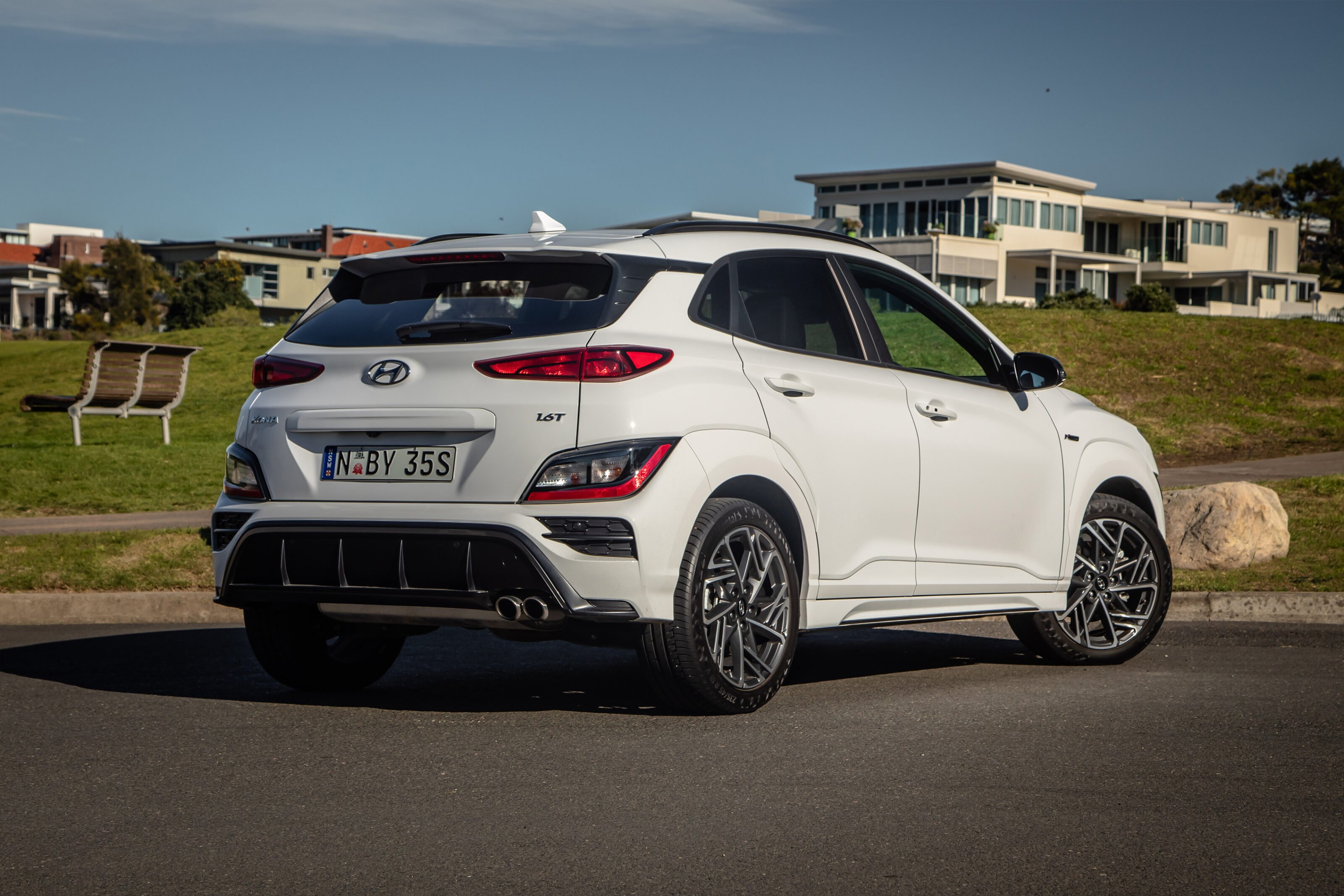
2021 Hyundai Kona N-Line specifications
| Body | 5-door, 5-seat crossover |
|---|---|
| Drive | AWD (on demand) |
| Engine | 1.6-litre turbo four-cylinder |
| Transmission | 7-speed dual-clutch auto |
| Power | 146kW @ 6000rpm |
| Torque | 265Nm @ 1600-4500rpm |
| Bore/Stroke | 75.6mm x 89.0mm |
| Compression ratio | 10:1 |
| 0-100km/h (claimed) | N/A |
| Fuel consumption (combined) | 6.9L/100km (91 RON) |
| Weight | 1396-1504kg |
| Suspension | Front strut; rear multi-link |
| L/W/H | 4215/1800/1560mm |
| Wheelbase | 2600mm |
| Brakes | 305mm (f); 284mm (r) |
| Tyres | 235/45R18 |
| Wheels | 18-inch alloy |
| Price | $36,300 + ORCs |
Score breakdown
Things we like
- Engine’s mid-range performance
- Well-judged ride/handling balance
- Comfortable seats front and rear
Not so much
- Poor value compared with i30 N-Lines
- Less boot and cabin space than i30
- Gearbox calibration
- Intrusive lane-keep system
- 10,000km service intervals
We recommend
-
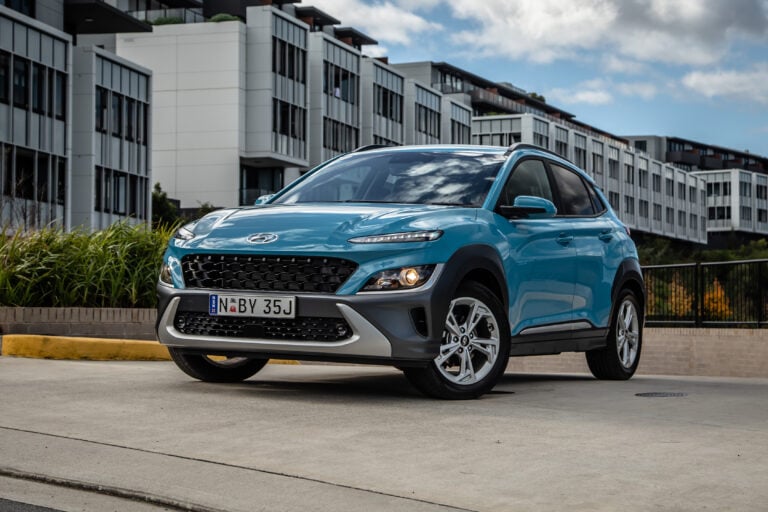 Reviews
Reviews2021 Hyundai Kona Elite review
Hyundai's compact SUV has a new look, new tech and an upgraded drivetrain to keep things fresh
-
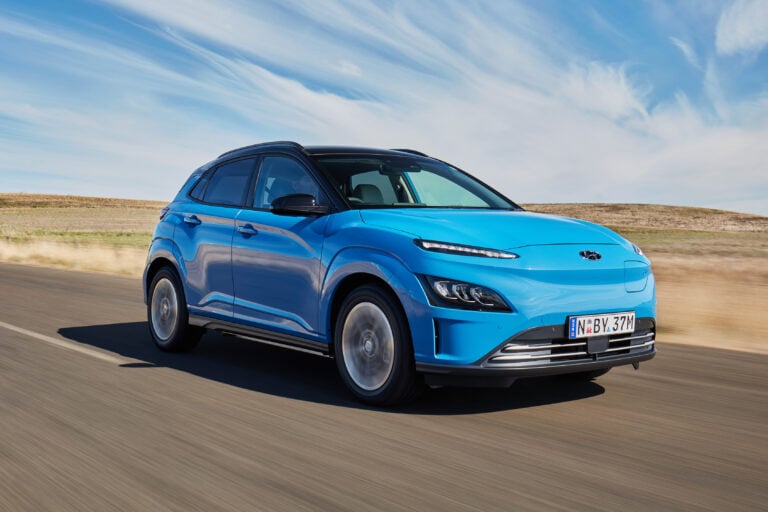 Reviews
Reviews2021 Hyundai Kona Electric Highlander review
High price brings high spec for Hyundai’s electric SUV, but is it worth it?
-
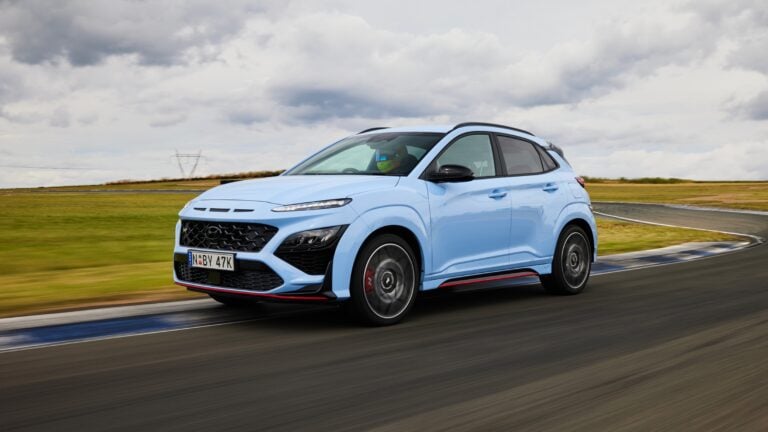 News
News2022 Hyundai Kona N Australian pricing and features
N department’s first SUV will cost from $47,500 before on-roads


